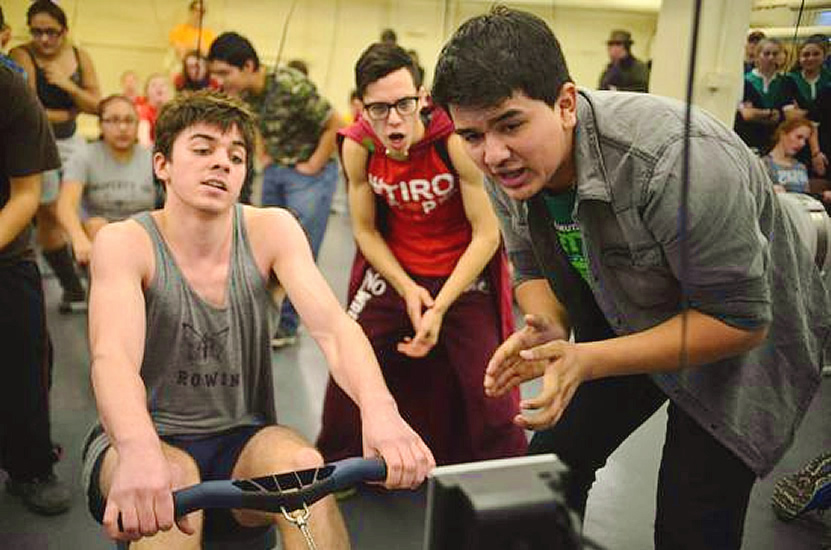Despite modest increases in the number of available afterschool opportunities for our young people over recent years, the demand for quality programs far outpaces the supply. According to Chapin Hall Center for Children and the Chicago Out-of-School Time (OST) Project there are only enough publicly-funded opportunities to reach a little more than one-third of Chicago’s teens. Last summer, the number of applicants to the City’s Youth Ready Chicago summer jobs program totaled more than 70,000 for less than 30,000 opportunities.
Afterschool programs don’t need to be academic in nature to be beneficial and schools cannot be expected to address all the challenges that face our city’s youth in isolation.
Student achievement and success later in life is achieved when youth have proper support and supervision, and are in environments conducive to boundary pushing with high bar setting. Acknowledging this, Chicago Public Schools plans to extend the day at select schools and will offer computer-based instruction in addition to other afterschool enrichment activities.
But afterschool programs don’t need to be academic in nature to be beneficial and schools cannot be expected to address all the challenges that face our city’s youth in isolation. New research shows that engaging youth in positive activities beyond the school day results in positive social change. For example:
- A study by After School Matters (ASM) found that students who participated in its programs missed fewer days of school than their classmates, had higher graduation rates and lower dropout rates than similar students who did not participate.
- Other studies have found that youth at highest risk benefit most, and that after-school hours are the prime hours for juvenile crime for those youth who do not have access to afterschool programs.
My organization, the Chicago Training Center (CTC), offers youth an enhanced opportunity to achieve through a non-traditional sports programming — rowing.
In order to provide this program we, like many other providers, have formed relationships with a variety of organizations, government agencies and private foundations. Though these partnerships are critical to our success, it has become clear to us that the current web-like system for delivering after school programs needs to change fundamentally if our communities are to ensure that every young person who wants to enroll in an after school program has an opportunity to do so.
Some of the problem is financial. In many cases large public institutions like Chicago Public Schools and the Chicago Park District have been stretched to the limit financially. There are simply not enough funds to meet current, let alone future, demand. Other highly esteemed institutions (After School Matters and Chicago Family and Support Services) simply cannot fund as many programs as they would like.
But funding is not the only problem. The system lacks fluidity and transparency and is unable to adapt as, over time, the age, location or ethnic character of its target audience changes. As a result, some programs are oversubscribed, while others rarely operate at full capacity. And in far too many cases, the achievement bar is woefully low or even unmeasured.
The public, families and young people ought to have clear, easy-to-use accountable information on the universe of options available to them now, regardless of funding source.
Luckily there are signs of potential change:
- Legislation recently passed in Springfield and awaiting the Governor Pat Quinn’s signature will begin to address these problems and create a framework for coordinating and strengthening afterschool services in Illinois. The After school Youth Development Project Act (SB 3543), developed by ACT Now! (a coalition of after school providers and advocates, including the Chicago Training Center), will, for the first time, support access to after school programs as state policy. While this will not, by itself, solve the funding problem, it will create a transparent, sustainable, replicable and responsive after school system with greater accountability and universal metrics by which to judge impact.
- The Chicago OST Project (a partnership of Chicago Public Schools, After School Matters, Chicago Department of Family and Support Services, Chicago Park District and Chicago Public Library) has created a data system that now promises cross-agency linked information about programs and participants (Cityspan) including more than 200,000 youth and 1,000 program sites; the Project has also established a baseline of common standards and measures for program quality across the programs they fund.
- Several organizations and initiatives, like the OST Project’s AfterschoolChicago.org, Cabrini Connections, and IllinoisOutcomes.org have also made inroads toward mapping the landscape of services available in our communities.
All of these efforts, while significant, are still formative and require different mixtures of funding, time and leadership to fully realize their promise. The public, families and young people ought to have clear, easy-to-use accountable information on the universe of options available to them now, regardless of funding source. Currently this is not available. For instance, Jesse White Tumbling Team — arguably the most well-known and successful Chicago Based youth non-profit — would not turn up on the OST Project’s Afterschoolchicago.org site, as the team does not receive financial support from the agencies that influence that site.
What is needed is for providers to take coordinated action to make information on all after-school options available to the public. A bottom-up approach will significantly enhance these larger initiatives and allow everything to run more effectively.
Organizing ourselves has the potential to improve the efficiency of the nonprofit organizations that provide programs in local communities, further encourage donors to invest in after-school efforts, and create the model for the efficient, effective delivery that government (local, state, or national) can embrace.
To do this, providers will need to create common metrics and common ways to evaluate impact that can improve, directly or indirectly, the programming offered to youths and increase the number of youths that the programs benefit. This approach will not only keep kids safe and off the streets, but help ensure every dollar invested in our youth people’s future helps to create a path worth following rather than just occupying.
The demand is clear, and the solutions are all around us. The promise of a more accountable, efficient and coordinated system is providers’ responsibility, and the time to act is now.
Epilogue
(2019) The websites that resulted from the above mentioned collaborative work — The Chicago OST Project, afterschoolchicago.org, and Illinoisoutcomes.org — are all now defunct. The headway made by the above mentioned initiatives lived on by the focused work of engaged agencies that continue to make positive impacts. Spotivity was born out of this false start and is focused on an even greater vision — the fundamental need that the entire teen spectrum, irrespective of socio-economic position, requires a tool to better identify and engage in meaningful engagement outside of school.





